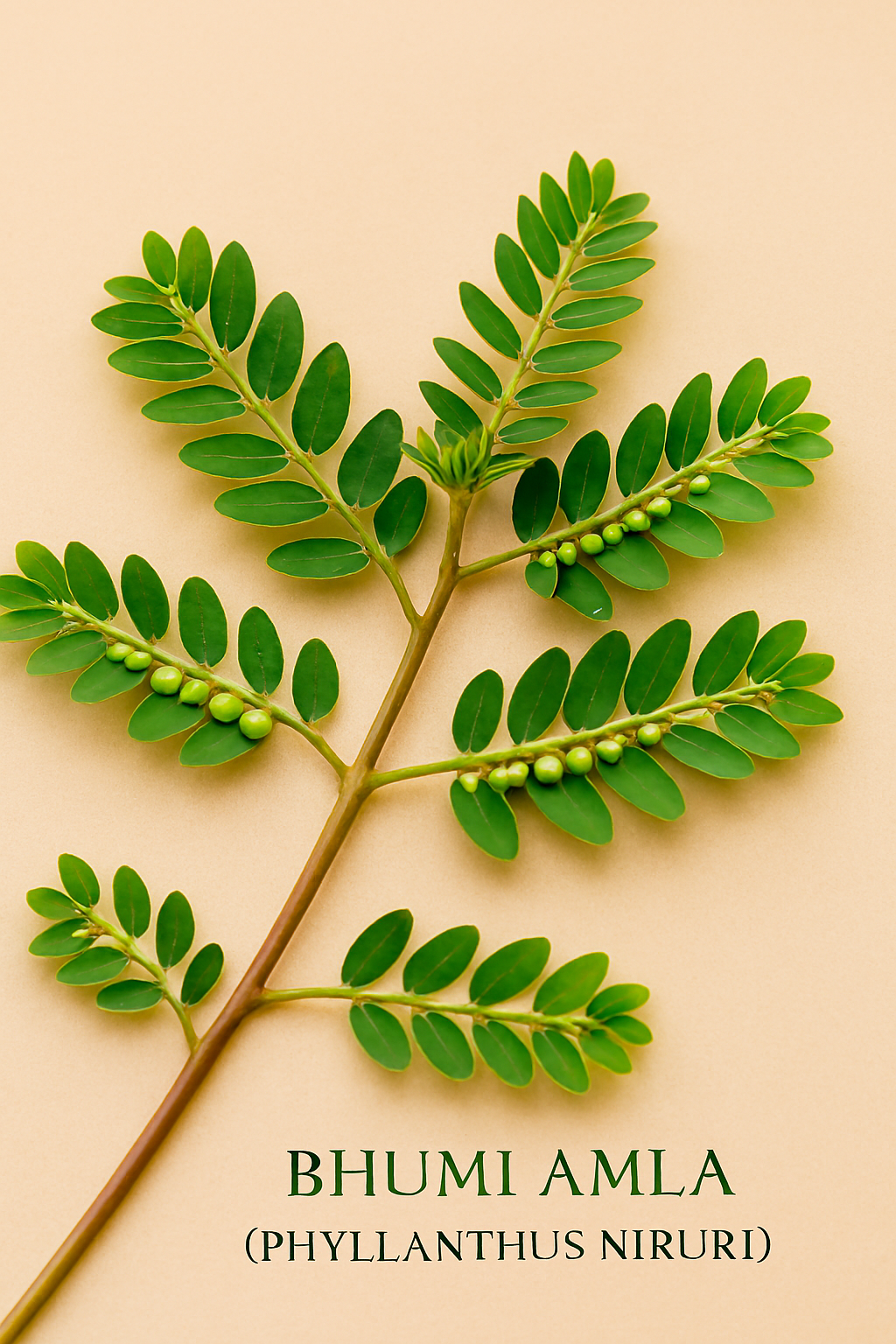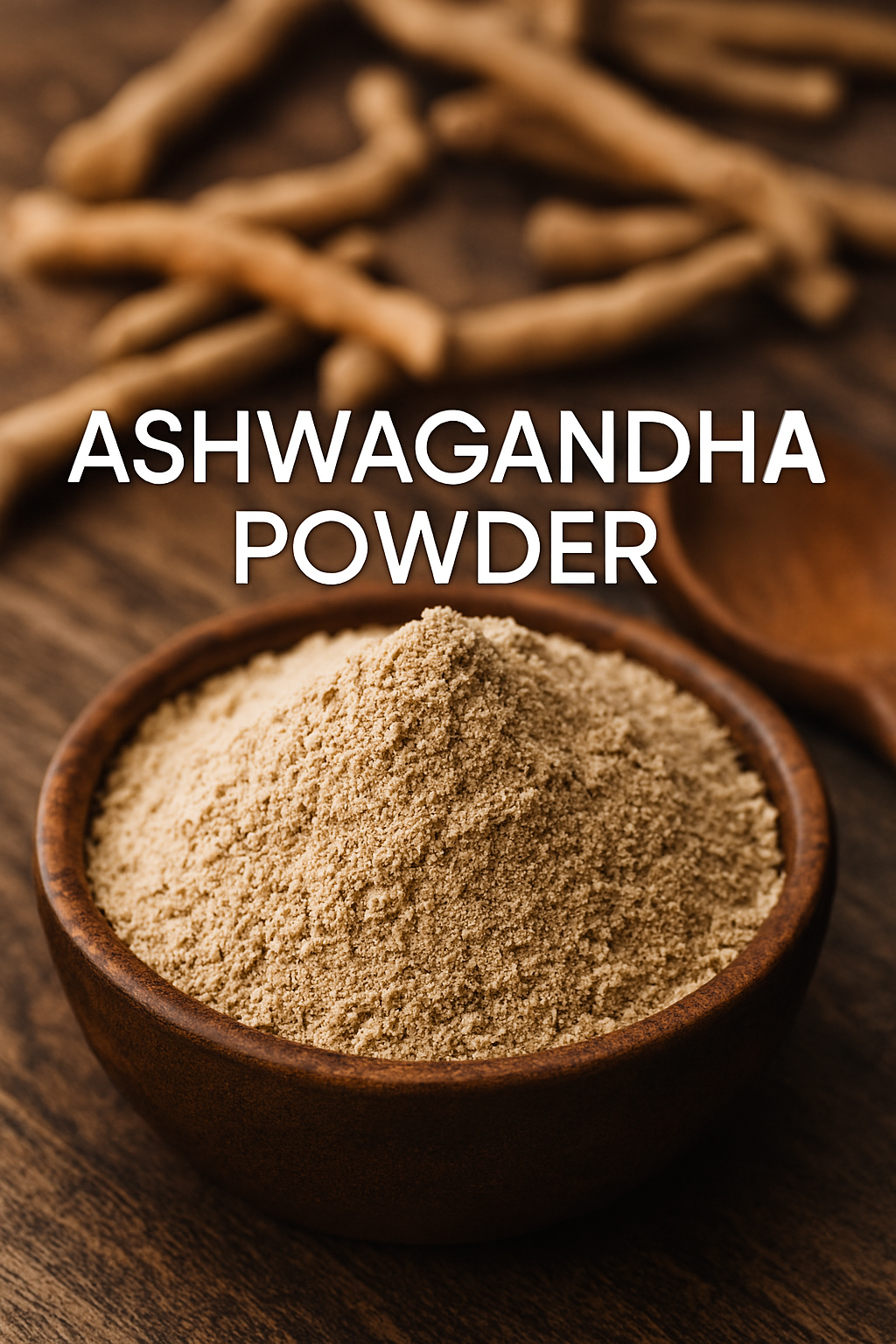In the vast wisdom of Ayurveda, few herbs stand out as quietly powerful as Bhumi Amla (Phyllanthus niruri). Often overshadowed by the more famous Amalaki (Emblica officinalis), Bhumi Amla—literally the “Amla of the Earth”—offers profound healing for the liver, kidneys, and urinary system.
Modern science now validates what Ayurveda has known for centuries: this small, ground-hugging herb carries hepatoprotective, anti-inflammatory, and stone-breaking powers, making it a cornerstone for detox and rejuvenation.
What is Bhumi Amla?
Bhumi Amla is a small annual herb of the Euphorbiaceae family. It grows widely across India, the Amazon rainforest, and tropical regions worldwide.
- Appearance: Slender branches with tiny oblong leaves arranged in two rows. Its flowers and ribbed fruits are hidden under leaves, inspiring the name “Seed-under-leaf.”
- English Name: Stonebreaker
- Spanish Name: Chanca Piedra
- Ayurvedic Name: Tamalaki
Vernacular Names of Bhumi Amla
| Language/Region | Names |
|---|---|
| Sanskrit | Bhumi Amla, Tamalaki, Bahupatra, Bhudhatri |
| Hindi | Bhui Amla |
| Marathi | Bhui Aavla |
| Tamil | Keezhanelli |
| Telugu | Nela Usiri |
| Kannada | Bhu Nelli, Kirunelli |
| Malayalam | Kizhanelli |
| Bengali | Hazarmani, Vuiamla |
| Gujarati | Bhonyamali |
| Odia | Narakoli |
| Assamese | Holpholi |
| Nepali | Bhui Awala |
| Punjabi | Lodhar |
Ayurvedic Properties (Dravyaguna Vijnana)
Ayurveda describes Bhumi Amla by its energetic qualities:
- Rasa (Taste): Bitter (Tikta), Astringent (Kashaya), with a hint of Sweet (Madhura)
- Guna (Qualities): Light (Laghu), Dry (Ruksha)
- Virya (Potency): Cooling (Sheeta) → balances fiery Pitta
- Vipaka (Post-digestive Effect): Sweet (Madhura) → stabilizing, nourishing
- Prabhava (Unique Action): Special affinity for the liver (Yakrit) and urinary system (Mutravaha Srotas)
Dosha Effect:
- Pacifies Pitta & Kapha
- Can aggravate Vata if overused
Therapeutic Actions of Bhumi Amla (Karma)
- Mutrala – Diuretic, flushes toxins and excess fluids
- Ashmari Bhedana – Stone-breaking (renal & gall stones)
- Yakrit Rasayana – Liver rejuvenator & hepatoprotective
- Shothahara – Anti-inflammatory
- Jvaraghna – Reduces fever
- Raktashodhaka – Blood purifier, improves skin
- Deepana/Pachana – Improves digestion
- Kashahara – Relieves cough
- Analgesic – Reduces colicky pain from stones
- Vishaghna – Antitoxic
Traditional & Modern Uses
1. Liver Protection (Yakrit)
- Jaundice (Kamala): First-line Ayurvedic remedy
- Hepatitis B & Alcoholic Liver Disease: Shown to protect hepatocytes and reduce viral replication
- Fatty Liver & Cirrhosis: Prevents scarring, aids regeneration
- General Hepatoprotection: Shields against drugs, alcohol, toxins
2. Urinary System Support
- Kidney Stones: Prevents crystallization, dissolves small stones, eases passage
- UTIs: Diuretic + antimicrobial → relieves burning, frequency, pain
3. Fevers & Inflammation
- Reduces Pitta-based fevers, intermittent fevers, and liver-related fevers
4. Skin & Blood Purification
- Helps with acne, eczema, psoriasis, boils via blood cleansing and digestive support
5. Metabolism & Digestion
- Diabetes: Lowers blood sugar, protects pancreas
- Acidity & Indigestion: Cools excess Pitta, improves Agni
Modern Scientific Research
Bhumi Amla is rich in lignans, flavonoids, tannins, alkaloids, terpenes, gallic acid, and vitamin C.
Research highlights:
- Hepatoprotective: Phyllanthin & hypophyllanthin protect liver from toxins
- Antiviral: Inhibits Hepatitis B virus entry & replication
- Antiurolithiatic: Prevents calcium oxalate crystal formation (kidney stones)
- Antioxidant: Strong free radical scavenger
- Anti-inflammatory: Reduces swelling & pain
- Antidiabetic: Lowers glucose, improves lipid profile
Ayurvedic Medicines Containing Bhumi Amla
- Clearliv Syrup: Liver protector
- A3 Forte Capsule: Fever & inflammation relief
- Avir Tablet: Allergy and hypersensitivity support
- Livplus Capsule: Liver tonic & immunity booster
- Vasuliv Tablet: Supports healthy liver function
- Beliv Tablet: Aids liver regeneration
How to Use Bhumi Amla
- Powder (Churna): 1–3 g twice daily with honey/warm water
- Decoction (Kashayam): 50–100 ml twice daily for liver/kidney issues
- Fresh Juice (Swarasa): 10–20 ml with honey, especially for jaundice
- Tablets/Capsules: Convenient standardized extracts
Often combined with: Guduchi, Kutki, Kalmegh, Punarnava for synergistic effect.
Side Effects & Precautions
- ❌ Pregnancy: Contraindicated (may stimulate menstruation)
- ⚠️ Diabetes: Risk of hypoglycemia (monitor sugar levels)
- ⚠️ Low Blood Pressure: May worsen hypotension
- ⚠️ Vata Disorders: Can aggravate dryness, anxiety, constipation if overused
- ⚠️ Autoimmune Conditions: May stimulate immune activity (avoid in lupus, MS, RA)
- ❌ Before Surgery: Stop 2 weeks prior (blood sugar/BP effects)
- ⚠️ Drug Interactions: May interact with diabetes meds, antihypertensives, diuretics, liver-metabolized drugs
Final Thoughts
Bhumi Amla is one of Ayurveda’s most trusted herbs for liver and kidney health, with potent stone-breaking, detoxifying, and blood-purifying qualities. Backed by modern research, it continues to bridge ancient tradition with scientific validation.
Used wisely—ideally under an Ayurvedic doctor’s guidance—it can be a lifelong ally for detox, immunity, and vitality.




